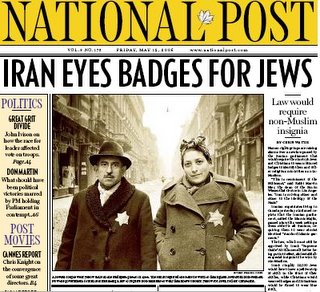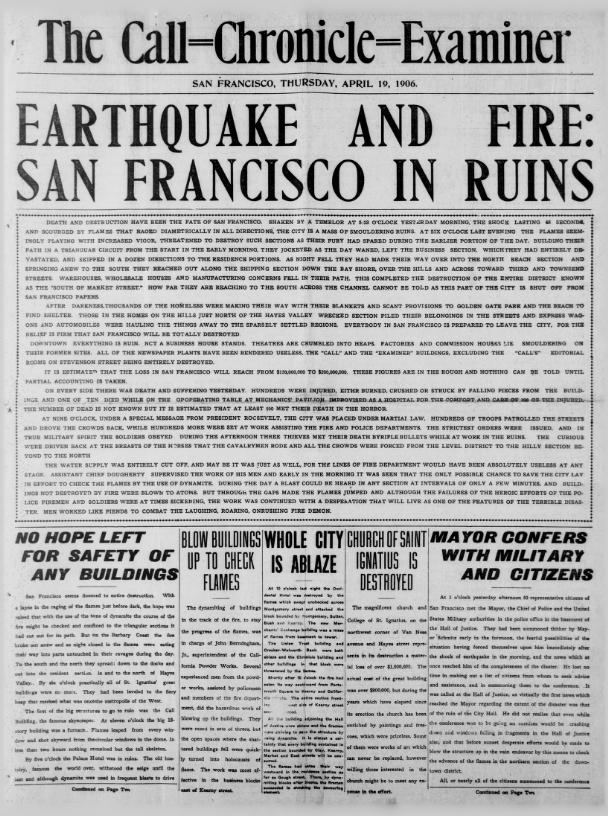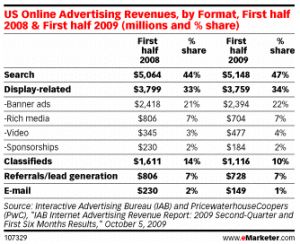 Just minutes ago, an Ontario judge allowed Canwest Global Communications to save the hemorrhaging National Post by moving it the paper into a group with its other dailies. Why Canwest wants to do this is not clear. Today was set to be the end of the line for Post, a conservative broadsheet tabloid that has shouldered much of the blame for parent Canwest Global’s financial troubles. The Post has apparently been losing prodigious amounts of money – 139 million Canadian dollars over the last seven years – but has also had a curious booster effect on Canwest’s other properties by buying services from them and spreading around corporate overhead costs. The Post’s value as an accounting tool may have reached its limit, however. A committee of Canwest creditors said it would stop covering the paper’s losses after today. The last-ditch effort to shuffle the paper in with its peers won’t save it in the long run if losses continue.
Just minutes ago, an Ontario judge allowed Canwest Global Communications to save the hemorrhaging National Post by moving it the paper into a group with its other dailies. Why Canwest wants to do this is not clear. Today was set to be the end of the line for Post, a conservative broadsheet tabloid that has shouldered much of the blame for parent Canwest Global’s financial troubles. The Post has apparently been losing prodigious amounts of money – 139 million Canadian dollars over the last seven years – but has also had a curious booster effect on Canwest’s other properties by buying services from them and spreading around corporate overhead costs. The Post’s value as an accounting tool may have reached its limit, however. A committee of Canwest creditors said it would stop covering the paper’s losses after today. The last-ditch effort to shuffle the paper in with its peers won’t save it in the long run if losses continue.
Former CIO Takes Over at Boston Globe
The publisher of the Boston Globe is retiring after 27 years with the New York Times Co. and three tumultuous years at the helm of its New England properties. He’ll be succeeded by a former chief information officer, which is an interesting choice given the need for the Globe to transition to the digital age.
P. Steven Ainsley, 56, called his three years as publisher “difficult but enormously gratifying.” He’s certainly right about the first part. Ainsley navigated the organization through a near-death experience this year, eventually wringing more than $20 million in concessions out of stubborn unions. This week the Globe reported a record 18.4% year-over-year drop in circulation, making it one of the worst performers among the 300-plus US newspapers tracked by the Audit Bureau of Circulation.
Successor Christopher Mayer, 47, is a longtime Globe executive who is currently Senior Vice President of Circulation and Operations and formerly chief information officer for the New England Media Group. He’s the first Globe insider installed as publisher by the NY Times Co. since its 1993 purchase of the paper. His most notable recent achievement was a price increase that “drove revenue up sharply,” according to a Globe report. His technology background should be an asset in helping the organization transition to a digital world. It’s also notable that he has no sales or editorial experience. Mayer appears to be an operations guy, which is what floundering newspapers need right now.
Miscellany
A survey of 2,404 US adults by Ipsos Mendelsohn and PHD found that 55.5% say they would be “very unlikely to pay for online content” while only 16.5% said they might pay. Be careful of reading too much into these figures, though. If the question was worded to ask respondents if they want to pay for something they now get for free, it’s not surprising that the majority said no. Publishers who are erecting pay walls are presumably offering some value that readers don’t get for free today, right? Right?
A bankruptcy judge early this week formally approved the sale of the Chicago Sun-Times and more than 50 suburban publications to a local businessman who bought the whole package for $26.5 million. There were no serious bidders other than financier James Tyree, who insisted that unions agree to 15% pay cuts before he’d proceed with his offer. They did agree after mounting a feeble bluff attempt. Tyree said he plans to “grow the company by seeking new revenue opportunities, to adapt and lead change in the rapidly transforming news industry, and to become profitable.” The Sun-Times Media Group’s financial position was severely weakened by a damaging series of scandals involving several former executives who are now in jail.
Two university researchers analyzed front-page coverage in four Argentine newspapers and found an inverse correlation between government funding and journalistic scrutiny of the government. The research indicates that, at least in Argentina, the government can buy favor with the media. Researchers compared the quantity of front-page coverage of government scandals over a 10-year period and matched that to publicly available data about how much the government spent on advertising month to month. The correlation was “huge,” said the Harvard and Northwestern University researchers. In fact, if “government ad revenue in a month increased by one standard deviation — around $70,000 U.S. — corruption coverage would decrease by roughly half of a front page.” Talk about measurable results! Advertisers should have it so good.
Writing on Nieman Journalism Lab, Joshua Benton wonders whether this should be an argument against a government bailout of public funding for distressed media companies. Perhaps, but given Argentina’s history of political repression and media censorship, it seems a stretch to compare the scenario to the US.
The Newport Daily News doesn’t want you to visit its website and it’s taking steps to make sure you don’t. The 12,000-circulation Rhode Island weekdaily is demanding that online visitors pay nearly two-and-a-half times as much for a yearly subscription as print subscribers do. That’s right: It’ll cost you $145 per year to get six weekly issues of the Daily News delivered to your door but $345 to get it online. “Our goal was to get people back into the printed product,” publisher Albert K. Sherman, Jr. tells Nieman’s Edward J. Delaney. Adds the newspaper’s executive editor, “It will be a print-newspaper-first strategy.” The Daily News´ strategy is helped somewhat by continuing problems at the Providence Journal, which has cut back on Newport coverage amid layoffs.
And Finally…
The mass-production city dailies, aimed at common denominators in the market for newspapers, seem to have passed their heyday. …The reason the mass-production dailies are declining is not, however, that there are no significant similarities in a city’s total market for news, but that the job once done by mass-production newspapers has been largely duplicated by television and radio news and feature programs, and by the mass-production weekly news magazines.
Sounds straightforward enough. Except Rothacker points out that it was written 40 years ago. (Jane Jacobs, The Economy of Cities, (Random House, 1969), 240.)


















